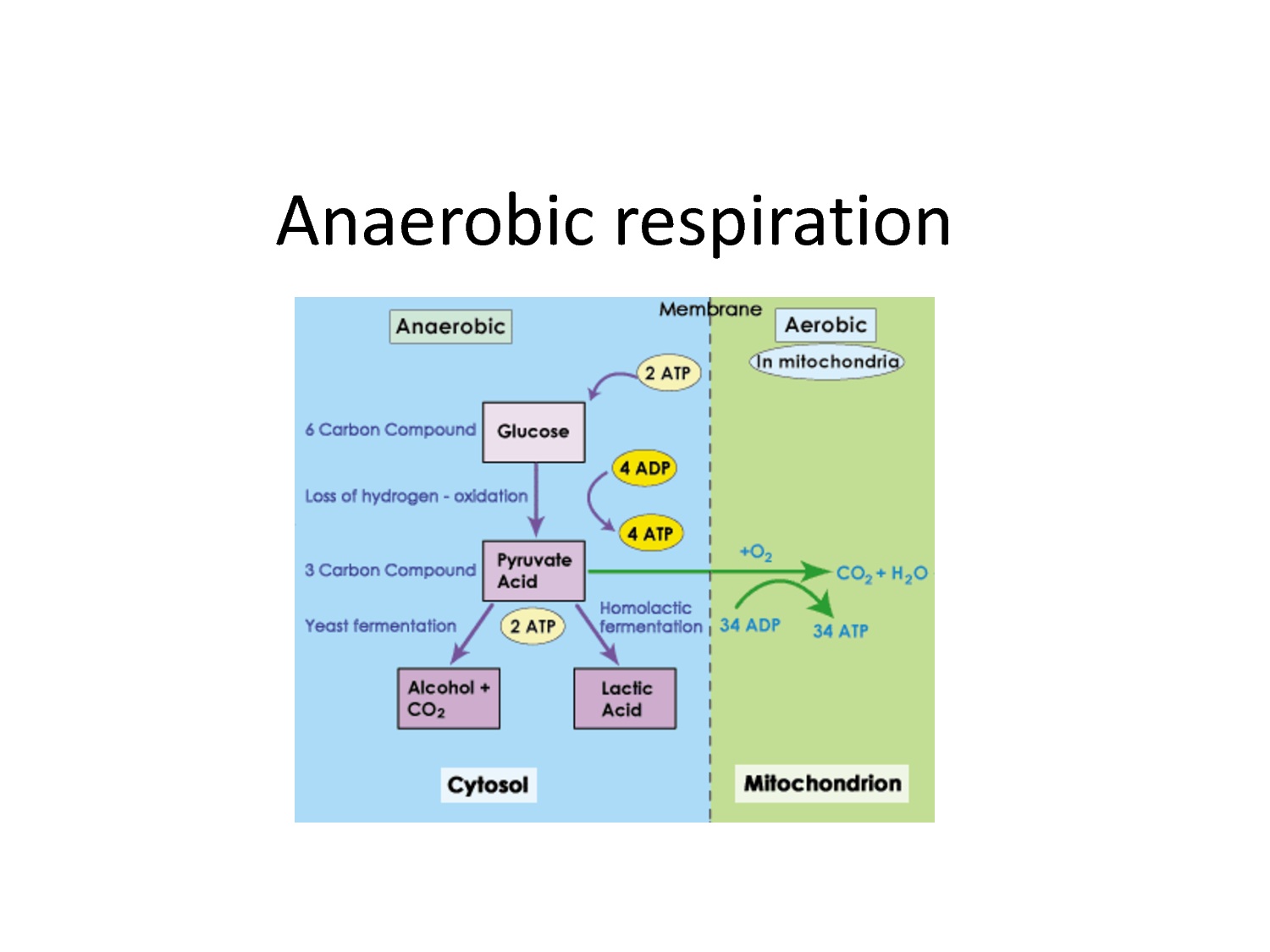Introduction
 Anaerobic respiration is the type of cellular respiration that does not require oxygen. Most living things use oxygen to create ATP from glucose but lots of living things can make ATP without oxygen. Plants, fungi and some bacteria are the main organisms that use anaerobic respiration.
Anaerobic respiration is the type of cellular respiration that does not require oxygen. Most living things use oxygen to create ATP from glucose but lots of living things can make ATP without oxygen. Plants, fungi and some bacteria are the main organisms that use anaerobic respiration.
Task
 You will be answering three questions from each other websites provided on Lactic Acid fermentation, Alcoholic Fermentstion, and the advantages of Aerobic and Anaerobic Fermentation.
You will be answering three questions from each other websites provided on Lactic Acid fermentation, Alcoholic Fermentstion, and the advantages of Aerobic and Anaerobic Fermentation.
Process
Lactic Acid Fermentation
http://education-portal.com/academy/lesson/lactic-acid-fermentation-def…
Questions-
1. What is Lactic Acid Fermentation?
2. How many pyruvate molecules are left when glycolysis is finished?
3. What is the simple equation for lactic acid fermentation?
Alcoholic Fermentation
http://www.icr.org/article/glycolysis-alcoholic-fermentation/
Questions-
1. What is pyruvic acid broken down into in alcoholic fermentation?
2. What are the last two enzymes in alcoholic fermentation?
3. What are the products of alcoholic fermentation used in?
Advantages of Anaerobic and Aerobic Respiration
http://moodleshare.org/mod/book/view.php?id=2108&chapterid=258
Questions-
1. What is a major advantage of Aerobic respiration?
2. How many ATP molecules can aerobic respiration produce?
3. Anaerobic respiration lets organisms live where there is little or no what?
Conclusion
Anaerobic respiration is a process used without oxygen. Aerobic respiration uses oxygen. Humans use lactic acid fermentation and alcholic fermentation is used in baking.